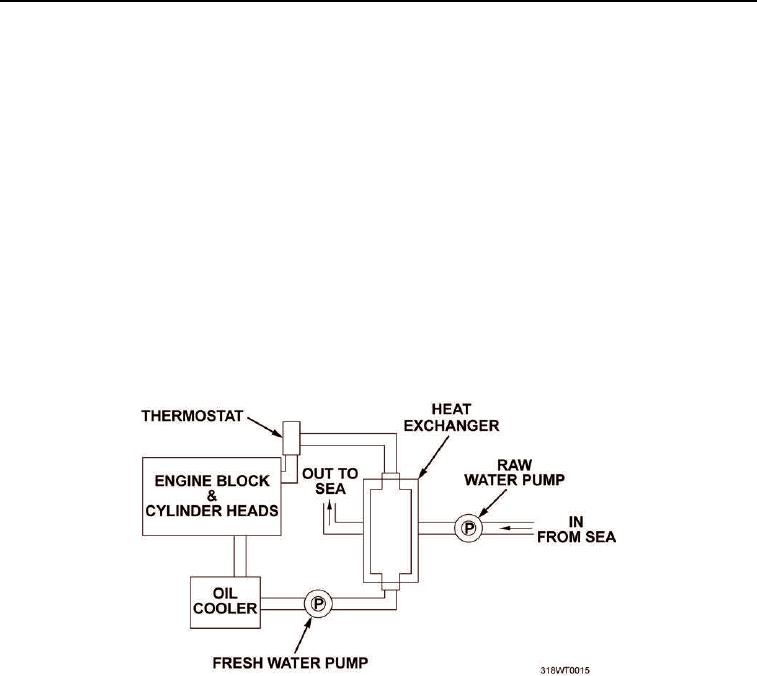TM 55-2815-574-24
0003
FUEL SYSTEM - Continued
Electronic Governor
The electronic governor system provides engine speed control in the place of mechanical linkages.
The actuator is a simple, proportional, electric solenoid having a sliding armature whose magnetic force is
proportional to the input coil current. The armature glides on anti-friction bearings and is balanced between the
force of the return spring and the magnetic force, thus providing a delay-free linear movement. The linear motion
is converted to an output shaft rotation by a crank arm that is connected to the injector control rack linkage, thus
controlling the fuel rate the engine is provided.
COOLING SYSTEM
To effectively dissipate the heat generated by the engine, a heat exchanger and raw water pump are used. The
system is provided with a centrifugal type water pump that circulates the engine coolant. The system incorporates
thermostats to maintain a normal engine operating temperature.
Upon starting a cold engine or when the coolant is below operating temperature, the coolant flow to the heat
exchanger is blocked or restricted by the thermostats in the thermostat housings. A bypass provides coolant
circulation within the engine during the warm-up period.
Figure 7. Cooling System.
In the heat exchanger cooling system, the coolant is drawn by the engine water pump from the heat exchanger
and is forced through the engine oil cooler, cylinder block, cylinder heads, and exhaust manifolds to the
thermostat housings. A bypass from the thermostat housings to the inlet side of the water pump permits
circulation of coolant through the engine when the thermostats are closed. When the thermostats are open, the
coolant flows through the heat exchanger where it is cooled. An engine driven raw water pump circulates raw
water (sea water) through the heat exchanger to lower the temperature of the engine coolant.






